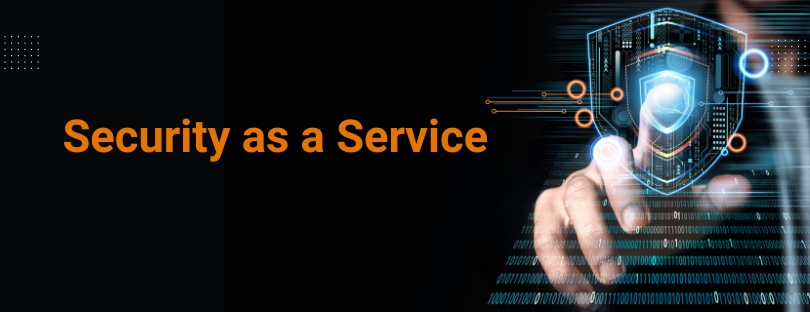
The Explosive Growth of Security as a Service: A $75 Billion Industry by 2032
In today’s digital landscape, where cyber threats lurk around every corner, the future of security is evolving fast. We’re talking about Security as a Service (SECaaS), and it’s shaping up to be a game changer for businesses of all sizes.
With the security as a service, market projected to explode from $13 billion in 2022 to an astonishing $75 billion by 2032, growing at a staggering compound annual growth rate (CAGR) of 19.4%, it’s crucial to understand what this means for organizations worldwide.
Understanding Security as a Service
Security as a Service (SECaaS) is a modern approach to cybersecurity. Imagine outsourcing your security needs to a specialized team—this is SECaaS. By subscribing to these services, businesses can access cutting-edge security solutions without the hefty price tag of developing and maintaining their own systems.
How Does SECaaS Work?
Here’s the lowdown on how SECaaS operates:
- Subscription Model: Just like you’d subscribe to music or streaming services, organizations can subscribe to security solutions.
- Cloud-Based Services: Most SECaaS offerings are cloud-based, which allows for easier scalability and updates.
- Integrated Security Solutions: These services often include antivirus management, data loss prevention, and intrusion detection—all rolled into one neat package.
Why is the SECaaS Market Growing?
The surge in SECaaS adoption isn’t a fluke; several factors are driving this growth:
1. Rising Cyber Risks
With cyberattacks becoming more sophisticated, organizations must adopt robust security measures—and fast! The risk factors are escalating, fueled by:
- Increased online connectivity
- Greater reliance on cloud services
- More complex cyber threats
2. Demand for Advanced Security Solutions
Organizations are no longer satisfied with basic antivirus software. They want:
- Proactive Threat Intelligence: Predictive analytics that can preemptively identify threats.
- Robust Analytics: Data-driven insights that inform security strategies.
3. Growing Cloud Adoption
As businesses shift toward digital platforms, the demand for cloud-based security solutions skyrockets. Companies need flexible and scalable security that can grow with them.
SECaaS Components Breakdown
Let’s take a closer look at the key components of SECaaS to understand where the value lies.
1. Solutions vs. Services
It’s essential to differentiate between solutions and services in the SECaaS model:
Solutions (83% Market Share)
- Data Loss Prevention: Prevents unauthorized data access and sharing.
- Antivirus Management: Continuous threat detection and removal of malware.
- Intrusion Detection Systems (IDS): Monitors networks for malicious activities or policy violations.
Services (Projected 21.3% CAGR)
- Network Security: Ensures secure networks through firewalls and other tools.
- Endpoint Security: Protects individual devices accessing the corporate network.
- Cloud Security: Safeguards online resources and applications.
2. Market Segmentation by Organization Size
The market is divided into three main categories based on organization size:
- Large Enterprises (Approx. 66% Market Share): Typically, these organizations have the most significant needs owing to the complex nature of their operations.
- Small and Medium Enterprises (Projected 21.3% CAGR): These businesses increasingly adopt SECaaS due to limited resources for managing security in-house.
3. Geographic Insights
Geographically, the demand varies significantly:
- North America: Dominates the market thanks to a well-established digital infrastructure and high demand for advanced security solutions.
- Asia-Pacific: Expected to be the fastest-growing region due to its evolving threat landscape, compelling companies to recognize the importance of robust security.
The BFSI Sector: A Leader in SECaaS Adoption
When dissecting market trends by industry, the Banking, Financial Services, and Insurance (BFSI) sector leads the charge. Here’s why:
- Heightened the need for data protection and compliance.
- Continuous monitoring of transaction activities for fraud detection.
- Rising investment in advanced security technologies.
Interestingly, the healthcare and life sciences sector is predicted to experience explosive growth (24.9% CAGR) in SECaaS owing to stringent privacy regulations and the need to safeguard sensitive medical information.
Who’s Who in the SECaaS Market?
A myriad of players contributes to the SECaaS landscape. Here are some key players making big moves:
- Trend Micro Incorporated
- Oracle Corporation
- Sophos Ltd.
- Microsoft Corporation
- Cisco Systems, Inc.
- Proofpoint, Inc.
- Okta
- IBM Corporation
- Qualys, Inc.
- Forcepoint
Strategic Moves by Major Players
These companies are continuously innovating through:
- New product launches
- Collaborations and partnerships
- Geographic expansions
- Strategic agreements and joint ventures
Challenges Facing the SECaaS Market
Despite the promising growth, the SECaaS market isn’t without its hurdles:
1. Data Privacy Concerns: As companies outsource their security needs, concerns about data handling and privacy emerge.
2. Skills Shortage: There’s a significant gap in cybersecurity skills, making it difficult for organizations to find the right talent.
3. Regulatory Compliance: Navigating the complex landscape of compliance can be challenging, especially for multinational organizations.
Future Trends in SECaaS
As we gaze into the future, several trends are likely to shape the SECaaS landscape:
1. AI and Machine Learning Integration
Using AI and ML in security solutions enables organizations to detect threats faster and respond to incidents more efficiently. These cutting-edge technologies will redefine security protocols by:
- Automating mundane tasks
- Enhancing threat analysis
- Enabling predictive security measures
2. Increased Focus on Endpoint Security
As the workforce becomes more mobile and remote, the importance of securing endpoints—laptops, smartphones, tablets—will continue to grow. Companies will invest more in ensuring that these points are fortified against attacks.
3. Rise of Zero Trust Security Models
The zero trust security model, which operates on the principle of “never trust, always verify,” is gaining traction. Organizations will increasingly adopt this framework to ensure that all users are authenticated regardless of their location.
In Conclusion
The Security as a Service market is not just a trend—it’s a vital adaptation to the evolving digital landscape. As cyber threats multiply and become more sophisticated, SECaaS offers a lifeline for businesses seeking robust, scalable, and cost-effective security solutions. With the market projected to reach $75 billion by 2032, it’s clear that organizations must embrace these services to stay one step ahead of cyber threats.
Whether you’re a large enterprise or a small business, understanding and leveraging SECaaS can safeguard your digital realm. So, are you ready to take your security to the next level?









